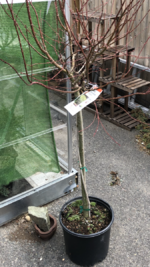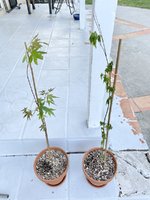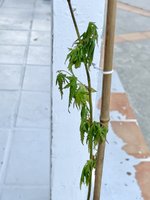@Tums today's high was 90F! Slightly unseasonably hot, but we're also in a drought year so you never know what to expect!
Not sure about the watering since I was gone for a week, but I can say that the pot that wilted had a slightly higher drip rate which I thought might be okay at the time. I had it timed to roughly 43secs/drop (using an IV drip) which calculated out roughly to 0.49 cups of water per day. The soil feels wet at about an inch depth, but not soupy saturated. My soil mix is 10% perlite, 10% pumice, 10% akadama, 30% sifted decomposed granite, and 40% Miracle Gro Cactus Mix, so I would think it's got sufficient drainage.
I'll check deeper for dryness tomorrow as perhaps the drip lines only watered shallowly. For the time being, I disconnected the drip-lines incase I was drowning the plant!





